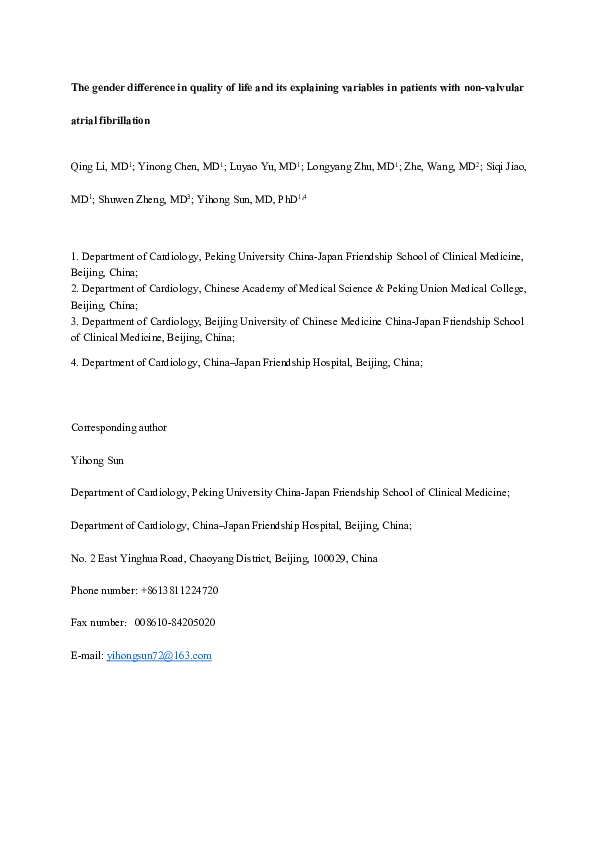The gender difference in quality of life and its explaining variables in patients with non-valvular atrial fibrillation
Abstract
Background: Women with atrial fibrillation (AF) had worse quality of life (QoL) than men, while the contributing factors to worse QoL in women is unclear.
Methods: We analyzed the data of 3562 patients with non-valvular AF (NVAF) enrolled in the China Registry of Atrial Fibrillation. The Medical Outcomes Study 36-item Short-Form Health Survey (SF-36) was used to evaluate QoL and compared between women and men. Multivariate logistic regression analysis model was used to explore the factors might explain the sex disparity on QoL.
Results: Overall, 43.3% of the cohort were women (n=1541). Women were much older than men (72±9.8 vs. 68±11.9 years, p < 0.001). Compared to men, women were more likely to have more symptoms, hypertension, diabetes mellitus, and heart failure. Women were less like to receive catheter ablation (4.5% vs. 6.1%, p = 0.044). Women also had both lower physical component summary (PCS) scores (48±9 vs. 51±9, p < 0.001) and mental component summary (MCS) scores (49±10 vs. 51±10, p < 0.001) than men. In the multivariable analysis of the worse PCS scores in women, patients’ age might explain 32.9%, low level of socioeconomic status 20.0%, lifestyle 14.3%, cardiovascular comorbidities 15.7%, more symptoms 5.7%, and less catheter ablation 1.4%. These factors could explain a similar proportion of the sex disparity in MCS scores. All together, these factors could explain 54.3% for worse physical function status and 46.8% for worse mental function status.
Conclusions: Women patients with AF had worse QoL than men. The following factors could partly explain the worse QoL in women: older age, low level of socioeconomic status, more cardiovascular comorbidities, less smoking and drinking, more symptoms and received less catheter ablation.


